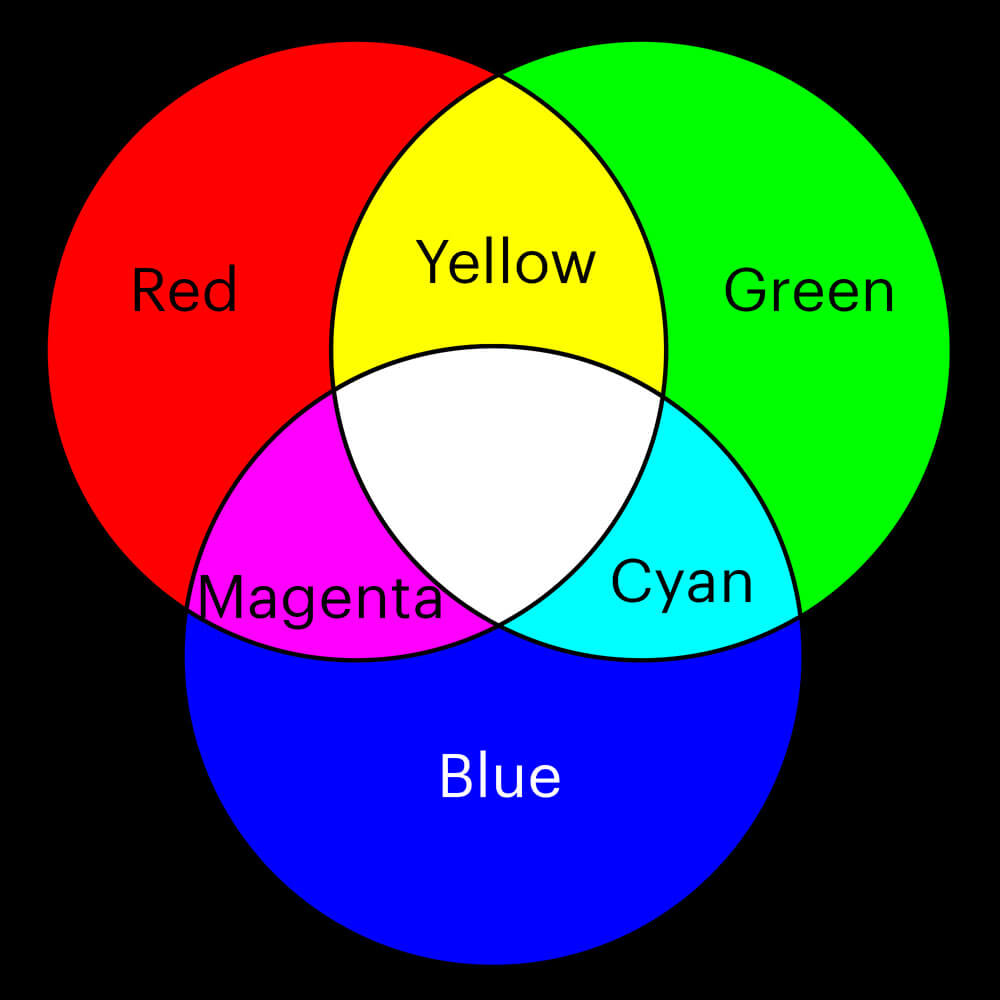
The RYB primary colors became the foundation of 18th-century theories of color vision as the fundamental sensory qualities blended in the perception of all physical colors and equally in the physical mixture of pigments or dyes.

The secondary colors, violet (or purple), orange, and green (VOG) make up another triad, conceptually formed by mixing equal amounts of red and blue, red and yellow, and blue and yellow, respectively. Red, yellow, and blue are the primary colors of the RYB color "wheel". It predated modern scientific color theory. It is used in art and art education, particularly in painting. RYB (red, yellow, blue) is the traditional set of primary colors used for mixing pigments. The resultant spectral power distribution is predicted by sequentially taking the product of the spectral power distributions of the incoming light and transmissivity at each filter. Each layer partially absorbs some wavelengths of light from the illumination spectrum while letting others pass through, resulting in a colored appearance. The subtractive color mixing model predicts the resultant spectral power distribution of light filtered through overlaid partially absorbing materials on a reflecting or transparent surface. This idealized model is the essential principle of how dyes and inks are used in color printing and photography where the perception of color is elicited after white light passes through microscopic "stacks" of partially absorbing media allowing some wavelengths of light to reach the eye and not others. Subtractive color or subtractive color mixing predicts the spectral power distribution of light after it passes through successive layers of partially absorbing media. The overlapping subtractive yellow, cyan and red (magenta) image elements can be seen clearly along the edges of the image. Subtractive color mixing An 1877 color photo by Louis Ducos du Hauron, a French pioneer of color photography. ( January 2012) ( Learn how and when to remove this template message)

Please help to improve this article by introducing more precise citations.

This article includes a list of general references, but it lacks sufficient corresponding inline citations.


 0 kommentar(er)
0 kommentar(er)
